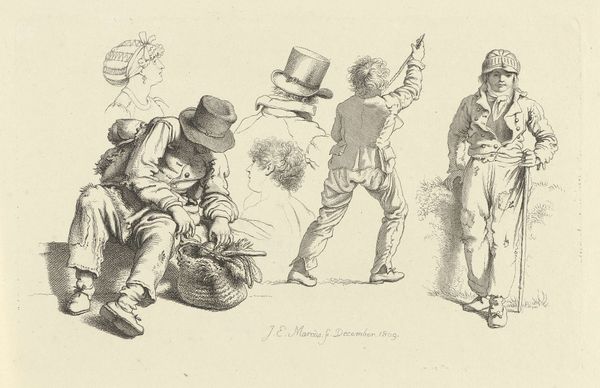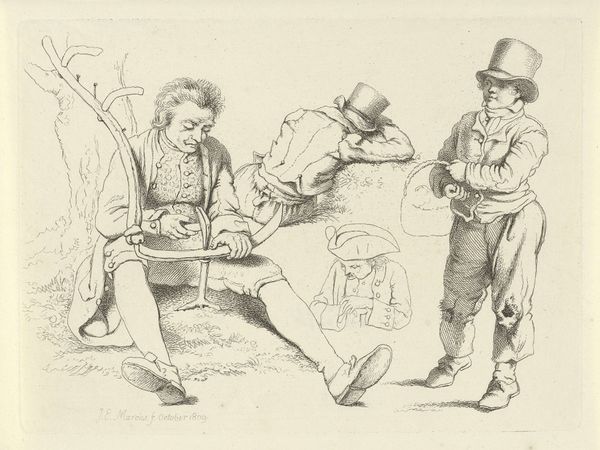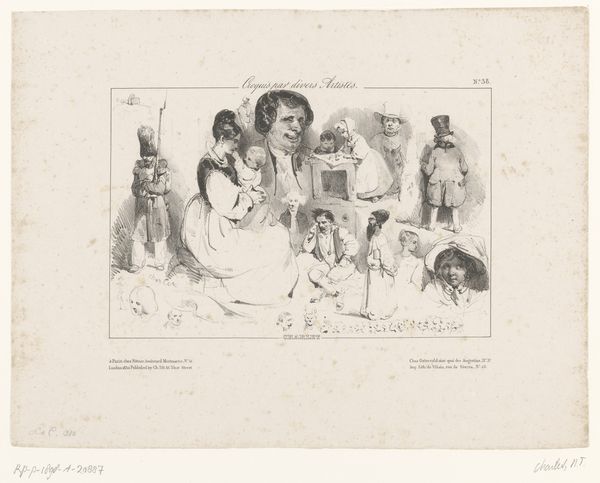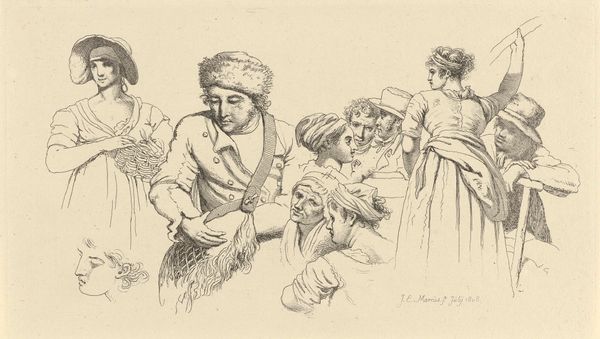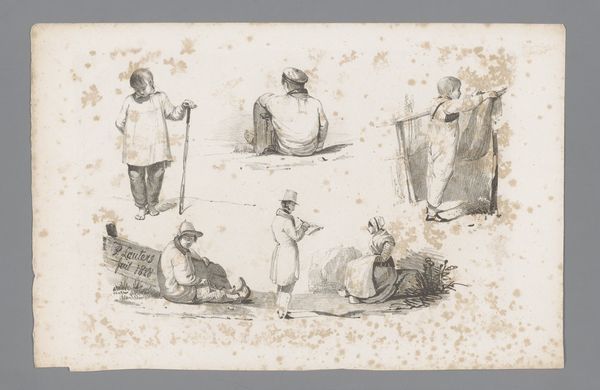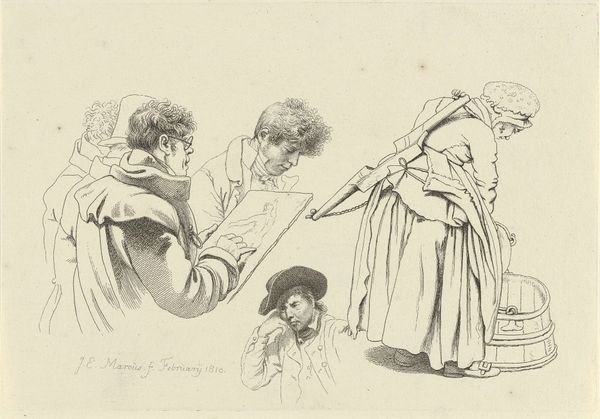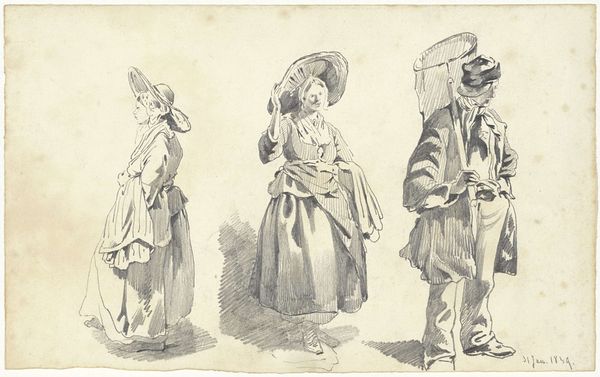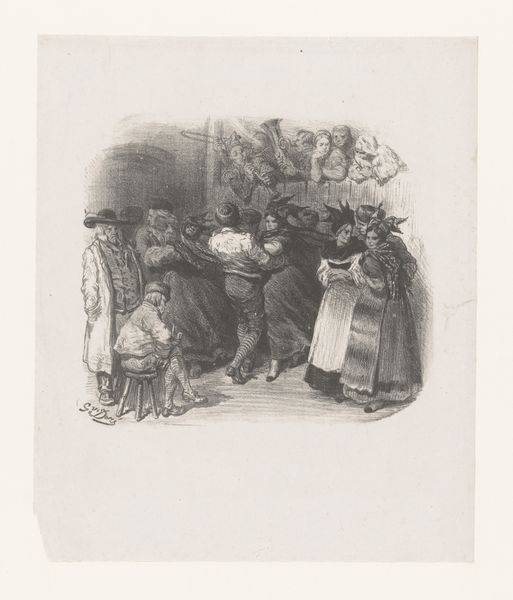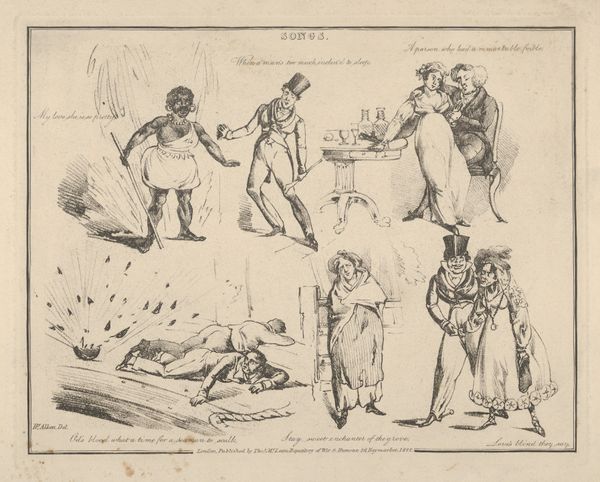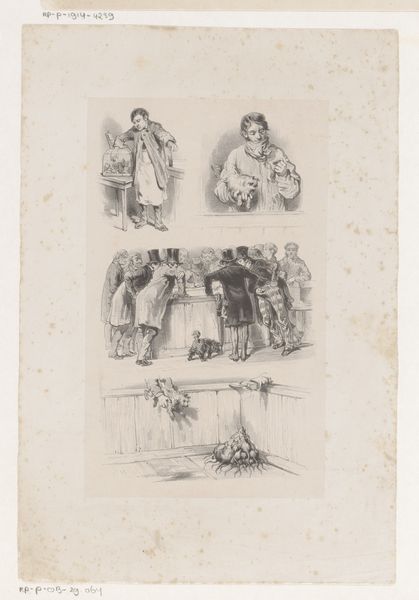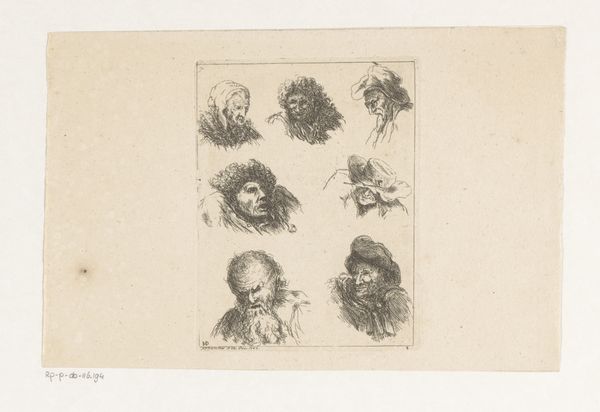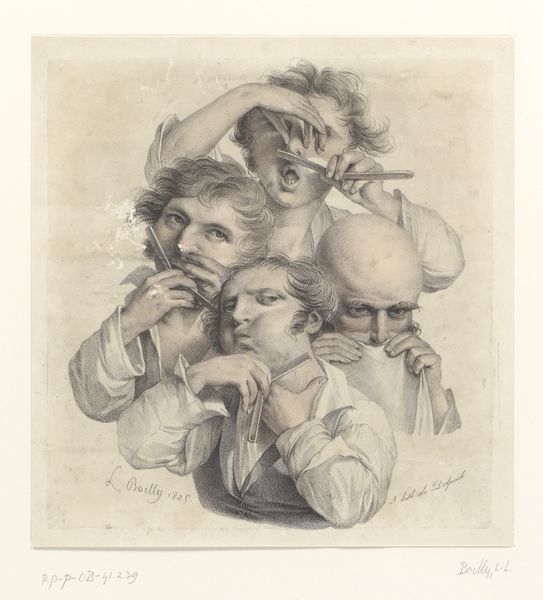
drawing, paper, pencil
#
portrait
#
drawing
#
imaginative character sketch
#
neoclacissism
#
quirky sketch
#
dutch-golden-age
#
pencil sketch
#
cartoon sketch
#
paper
#
personal sketchbook
#
sketchwork
#
pencil
#
sketchbook drawing
#
genre-painting
#
storyboard and sketchbook work
#
sketchbook art
#
fantasy sketch
Dimensions: height 123 mm, width 217 mm
Copyright: Rijks Museum: Open Domain
Curator: Jacob Ernst Marcus created this drawing, "Studieblad met figuren en een rustende visboer met pijp", in 1808. It's currently held at the Rijksmuseum. Editor: My initial impression is one of captured weariness. There’s a central figure that exudes exhaustion and around him, like scattered thoughts, are faces displaying a variety of moods and perhaps the emotional states the central figure is struggling with. Curator: Precisely. The arrangement creates an interesting visual rhythm. Notice how the artist uses line and shading to give depth and character to each figure. The composition, while seemingly random, adheres to classical principles of balance. Each element contributes to an overall sense of contemplation and subdued energy, perfectly rendering an era. Editor: I find the emphasis should be put less on what era is being portrayed, and more so how it’s being portrayed. How much did pencils and paper cost the artist? How accessible were these resources? Given this image is in the vein of a sketchbook or practice paper, it still gives clues to economic constraints imposed on Dutch artists during this period. Curator: A relevant point, although the technical skill in capturing light and shadow on paper elevates it beyond mere record. Consider the use of hatching and cross-hatching to define forms. It invites us to dissect the composition formally and engage with the visual language the artist employs. Editor: Yes, but that visual language emerges from tangible actions. What sort of labor practices dictated who was being depicted, how they were being depicted, and who had access to the materials necessary to bring a concept from mind to reality? The tools themselves and the materials from which they’re made contribute to meaning and are part of its formal quality. Curator: The dichotomy between raw material and finished artwork reveals artistry; the transformation itself reveals talent. The meticulous craftsmanship gives this sketch its sophistication. Editor: But let’s not overlook the societal dimensions interwoven with these sketches. From these fragments, we grasp both labor conditions and their capacity to be elevated and transformed through artistic skill, while still retaining the material history in its texture and tone. Curator: A balance, then. We see skill elevating the pedestrian, but never divorced from its origins. Editor: Exactly.
Comments
No comments
Be the first to comment and join the conversation on the ultimate creative platform.
